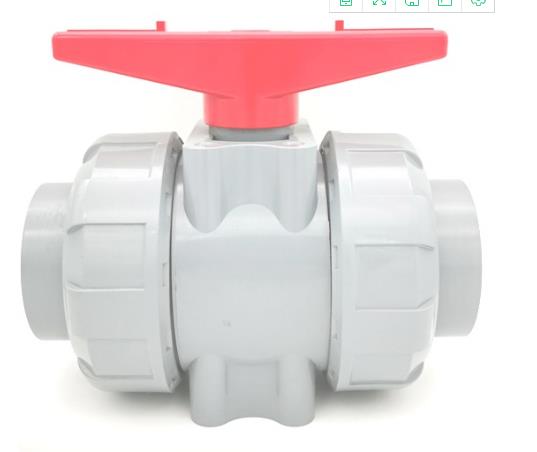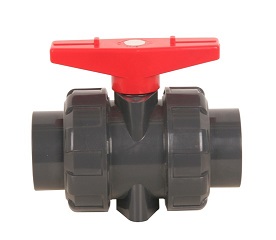You’re probably familiar with PVC pipe. It's the white plastic pipe commonly used for plumbing and drainage. PVC stands for polyvinyl chloride, and it’s become a common replacement for metal piping. PVC’s strength, durability, easy installation, and low cost have made it one of the most widely used plastics in the world. PVC is a thermoplastic material that is molded into different shapes to create pipes, fittings, valves and other liquid handling supplies.
You can think of CPVC as PVC’s cousin. They are similar in many ways, but they shouldn't be used interchangeably. Both are made of the same basic elements with one distinguishing factor. CPVC is altered by a free radical chlorination reaction that effectively increases the chlorine content of the material. CPVC is also a thermoplastic that is molded into many of the same products as PVC.
This difference in makeup allows CPVC to withstand a wider range of temperatures. This is why many building codes require the use of CPVC as opposed to PVC for use in hot water applications. The ASTM standard allows PVC to be used in applications not exceeding 140 degrees F.
Temperatures over this can cause softening of the material and weakening of joints. CPVC on the other hand can handle temperatures up to 200 degrees F.
There are a few other differences between the two materials. Most North American PVC pipe uses a Nominal Pipe Size (NPS), while CPVC is available in either NPS standard sizing -OR- CTS (Copper Tube Size) sizing.
The copper tube sizing system is an entirely different sizing system from Nominal Pipe Size, and as the name implies it is the same system used for copper tube pipe.
Before purchasing CPVC be aware of what your use will be, and what sizing system you require. Color can be a clue, too. Often CTS CPVC is a light yellowish color, while schedule 80 CPVC (NPS) is a light gray color.
PVC pipe and fittings usually comes in white or dark gray. Always check the manufacturer printing on the pipe to be sure.
Because of the differences in chemical makeup, sometimes PVC or CPVC also require different primers and solvents for connecting pipe and fitting joints.
The creation of a strong joint depends on the cement’s ability to chemically soften the plastic. For this reason you should always use a cement specific to the material you are using.
As mentioned before, CPVC is more suitable for hot water applications up to 200F. PVC is still often used for unheated water as well as for vent and drainage systems; however, CPVC has become widely used for both hot and cold potable water.
The more resistant properties of CPVC make it useful for commercial and industrial applications as well. Because of its wider range of applications, CPVC is usually pricier than PVC. That being said, it is still a very cost-effective and versatile material.
We recommend the use of PVC for recreational use/building, cold water systems, vent systems, and drainage systems. CPVC is recommended for applications where the maximum temperature will exceed 140 degrees Fahrenheit, but stay under CPVC's max rating of 200 degrees Fahrenheit.
Another deciding factor in which material to use is the chemical makeup of media being handled in your application. Though PVC and CPVC both are resistant to many of the same chemicals, some are best handled by one or the other.
Consult a chemical compatibility chart to be sure the piping materials you choose will work with your unique application.
All NPS size pipe and fittings will fit together, but it is not recommended that you mix and match materials. Mixing materials can compromise the pipe line's temperature and pressure ratings. For that reason we always recommend any pressurized pipe system be constructed using matching piping material and schedules.

